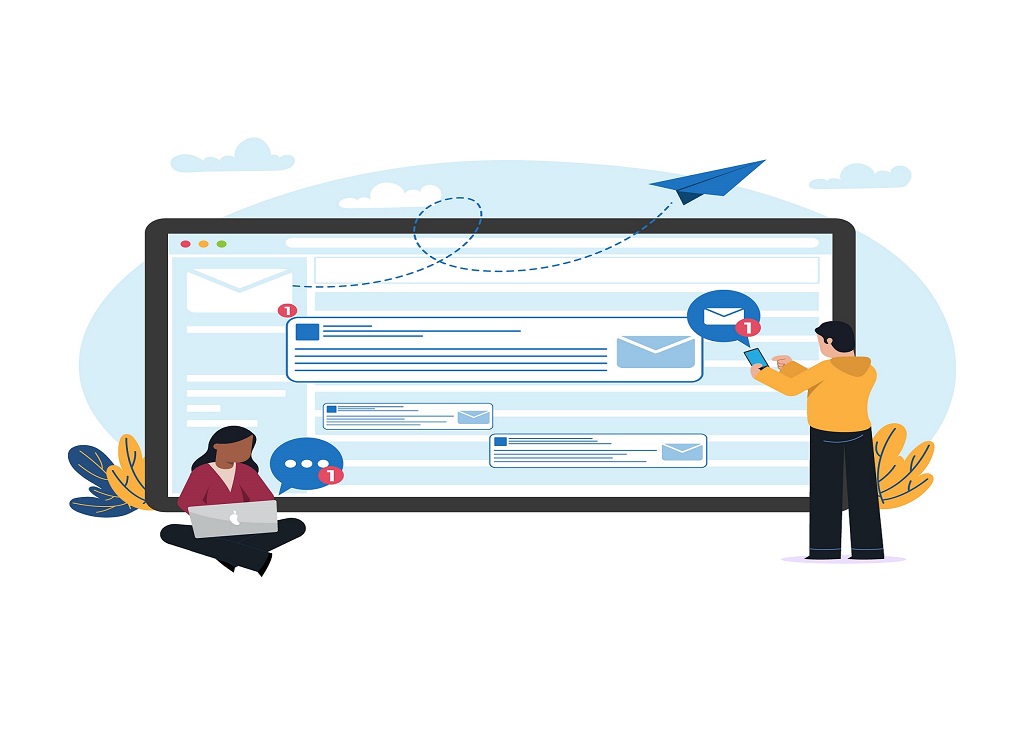
Introduction:
As a business owner, you’re always looking for ways to reach your customers more efficiently and effectively. One of the most powerful tools available for achieving this goal is automated email campaigns. Automated emails are pre-written messages that are automatically sent to your customers based on triggers you set up, such as a new subscriber or a purchase. In this blog post, we’ll explore the benefits of automated email campaigns, the different types of campaigns you can create, and best practices for setting them up.
Automated email campaigns are pre-written email messages that are sent automatically to a specific group of people based on a trigger or a set of triggers. These triggers can be actions like signing up for a newsletter, making a purchase, or abandoning a cart. Automated email campaigns can be used to build relationships with customers, drive sales, and provide valuable information or offers to subscribers. They save time and increase efficiency by allowing businesses to send targeted, relevant messages to their customers without having to manually send each email.
Why they are important for businesses:
Automated email campaigns are important for businesses for several reasons.
They can save time and increase efficiency by automating the process of sending emails to specific groups of customers based on their behavior and preferences.
Automated email campaigns can help businesses build stronger relationships with their customers by providing personalized and relevant content and offers. This can lead to increased customer loyalty and repeat business.
We can drive sales and revenue by targeting customers with relevant offers or promotions at the right time. They can also help businesses recover potentially lost sales by sending abandoned cart reminders or re-engagement emails.
It allows businesses to track and analyze the performance of their email marketing efforts, enabling them to make data-driven decisions and continuously improve their campaigns. Overall, automated email campaigns are an important tool for businesses looking to increase efficiency, build stronger customer relationships, and drive revenue.
Benefits of Automated Email Campaigns:
Automated email campaigns offer several benefits for businesses, including increased efficiency and productivity. They allow you to reach your customers at the right time with the right message, without having to manually send individual emails. Other benefits of automated email campaigns include:
– Personalized and targeted communication: Automated emails can be tailored to the recipient’s interests, preferences, and behaviour, making them more relevant and engaging.
– Improved customer experience and engagement: Automated emails can help you build stronger relationships with your customers by providing valuable content and relevant offers.
– Higher conversion rates and revenue: Automated emails have been shown to have higher open and click-through rates than regular emails, which can lead to increased sales and revenue.
Types of Automated Email Campaigns:
There are several types of automated email campaigns you can create, including:
– Welcome emails: These are sent to new subscribers or customers to introduce them to your brand and encourage them to take a specific action, such as completing their profile or making a purchase.
– Abandoned cart emails: These are sent to customers who have added items to their cart but haven’t completed the checkout process. They can include personalized product recommendations or incentives to complete the purchase.
– Re-engagement emails: These are sent to customers who haven’t interacted with your brand in a while, such as those who haven’t opened or clicked on your emails in a certain period. They can include exclusive offers or personalized content to encourage them to re-engage with your brand.
– Cross-sell and upsell emails: These are sent to customers who have already made a purchase, offering them complementary or upgraded products or services.
– Post-purchase follow-up emails: These are sent to customers after they make a purchase, thanking them for their business and providing additional support or resources.
How to Set Up Automated Email Campaigns:
To set up automated email campaigns, follow these steps:
- Define your goals and objectives: Determine what you want to achieve with your automated email campaigns, such as increasing sales or improving customer engagement.
- Choose a reliable email marketing platform: There are several email marketing platforms available, such as Mailchimp or Constant Contact, that allow you to create and automate your email campaigns.
- Segment your audience and create email lists: Segment your audience based on demographics, behaviour, or preferences, and create targeted email lists for each segment.
- Create compelling email content and templates: Write clear and engaging email copy, and design visually appealing templates that align with your brand.
- Set up triggers and automation rules: Determine the triggers that will activate your automated emails, such as a new subscriber or a purchase, and create automation rules that dictate when and how the emails are sent.
- Test and optimize your campaigns: Monitor your campaign performance, such as open and click-through rates, and make adjustments as needed to improve their effectiveness.
Best Practices for Successful Automated Email Campaigns
- Personalize your emails: Personalization is a key component of successful email marketing. Use personalization tokens to include the recipient’s name, location, and other relevant information in your emails. Segment your email lists based on customer behavior and preferences to send more targeted and relevant content.
- Use clear and concise language: Keep your email content brief and to the point. Use simple and clear language that is easy to understand. Avoid using jargon or technical terms that may confuse the recipient.
- Include a clear call-to-action (CTA): Every email should have a clear call-to-action that tells the recipient what you want them to do next. Use a prominent button or link to make it easy for the recipient to take the desired action.
- Optimize your email frequency and timing: The frequency and timing of your automated email campaigns can have a significant impact on their effectiveness. Test different sending frequencies and times to determine what works best for your audience.
- Monitor and analyze your campaign performance: Use analytics tools to track the performance of your automated email campaigns. Monitor key metrics such as open rates, click-through rates, and conversion rates to identify areas for improvement.
- Continuously improve your campaigns: Use the insights gained from monitoring and analyzing your campaign performance to make data-driven decisions and continuously improve your campaigns. Test different subject lines, email content, and CTAs to optimize your campaigns over time.
Conclusion:
Automated email campaigns are a powerful tool for businesses looking to increase efficiency, build stronger customer relationships, and drive revenue. By automating the process of sending targeted and relevant email messages to specific groups of customers, businesses can save time and increase productivity while providing a personalized experience for their subscribers. The benefits of automated email campaigns include increased efficiency and productivity, personalized and targeted communication, improved customer experience and engagement, and higher conversion rates and revenue.
To create successful automated email campaigns, it’s important to follow best practices such as personalizing your emails, using clear and concise language, including a clear call-to-action, optimizing your email frequency and timing, monitoring and analyzing your campaign performance, and continuously improving your campaigns. In conclusion, automated email campaigns are an essential component of a successful email marketing strategy. By using the right tools and techniques, businesses can leverage the power of automated email campaigns to connect with their customers, drive sales, and grow their business.





